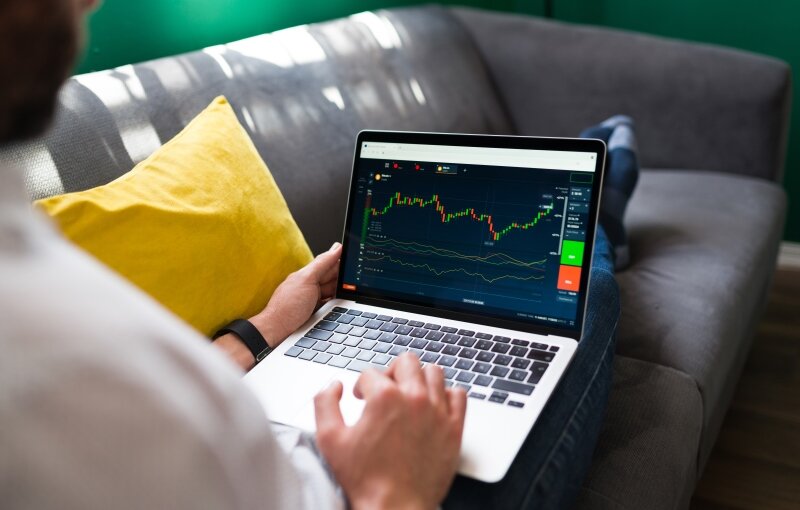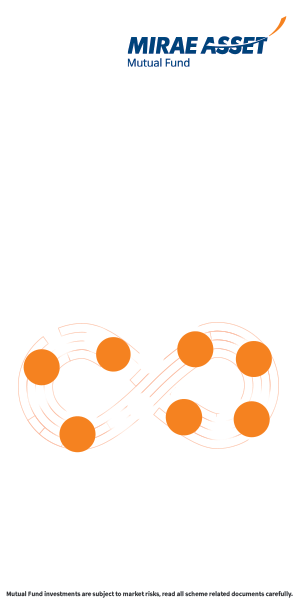What you need to know before you start investing in ETFs?

Exchange traded funds or ETFs are passive mutual fund schemes which track an equity or debt market index or the price of a commodity (e.g. gold, silver etc). Unlike actively traded mutual fund scheme, ETFs do not aim to beat the market index. ETFs aim to replicate the returns of the market index. ETFs are listed on stock exchanges and trade like shares of listed companies.
Who can invest in ETFs?
You need to have Demat and trading accounts to invest in ETFs. If you have Demat and trading accounts, you can start investing in ETFs using your trading account. If you do not have a Demat account, you should contact a stock broker / depositary participant (DP) to open Demat and trading accounts. You will have to fulfil Know Your Client (KYC) requirements i.e. submit identity proof (e.g. PAN card), address proof (e.g. Aadhaar card), photographs etc. and other account opening requirements e.g. cancelled cheque, duly filled account opening form etc. Once your KYC is verified and demat account opened, you can start investing in ETFs through your trading account.
How to invest in ETFs?
If you are subscribing to an ETF New Fund Offer (NFO), you will be allotted units at the offer price of the NFO. If you are investing in an ETF post listing, you will have to buy at the market price just like how you buy shares of companies. You should know that the price at which you buy ETF units from the stock exchange may be different from the Net Asset Value (NAV) of the fund. If you are purchasing in lot sizes (creation units) as specified in the Scheme Information Document (SID) of the fund, you can transact directly with the Asset Management Company (AMC) at applicable NAVs. However, you should note that the investment amount required to purchase a creation unit size (lot size) is usually quite large. For most retail investors, investing in ETFs through your trading account may be the only feasible option.
How to redeem / sell your ETF units?
You can sell your ETF units in the stock exchange at market prices just like how you sell shares of companies. You should know that the price at which you sell ETF units from the stock exchange may be different from the NAV of the fund. If you are selling in lot sizes (creation units) as specified in the SID, you can redeem directly with the AMC at applicable NAVs. As mentioned before, creation unit sizes are quite large. Therefore for most retail investors, the only feasible option of liquidity is through the stock exchanges.
What are bid / offer prices?
If you want to buy / sell ETF units through your online trading account, you need to understand bid / offer prices. Bid price is the maximum price at which a buyer is ready to buy a stock or an ETF. In other words, this is the maximum price at which you can sell your ETF units. Offer or ask price is the minimum price at which a seller is ready to sell a stock or an ETF; this is the minimum price you will have to pay to buy ETF units. The offer or ask price will be higher than bid price. The difference between offer or ask price and bid price is known as bid/ask spread. Bid/ask spread is an indicator of the liquidity of an ETF. Higher the bid/ask spread, lower is the liquidity. Liquidity is an important consideration, when you are investing in ETFs. You should invest in ETFs which have low bid / ask spread. Bid / offer prices along with quantities will be displayed on your online trading screen. You should see the bid / offer prices before you place your buy / sell order.
What is iNAV in ETF?
When you start investing in ETFs you will come across a term known as iNAV, which means intraday NAV or indicative NAV. Net Asset Value (NAV) is, the market value of all the securities held in a mutual fund scheme’s or ETF’s underlying portfolio less the liabilities divided by the total number of units of the fund outstanding. Indicative NAV or iNAV indicates the fair value of the ETF. Indicative NAV or iNAV is an important data point, which you must check before buying or selling ETF units in the stock exchange. As mentioned before the market price of an ETF may be different from the iNAV. Indicative NAVs or iNAVs of equity ETFs are updated with maximum 15 second lag by the AMC; so it is almost real-time from the perspective of retail investors. Indicative NAVs or iNAVs of debt ETFs are updated 4 times in a day.
What are different types of ETFs?
Today ETFs are available for multiple asset classes like equity, debt, commodities, international stocks etc.
- Equity ETFs track equity market indices (e.g. Sensex, Nifty, Bank Nifty etc).
- Debt ETFs track debt or money market indices (e.g. Nifty 5 year G-Sec Index, Nifty 10 year G-Sec Index, Target maturity indices etc).
- Commodity ETFs track the domestic price (in INR) of the underlying commodities (e.g. Gold, Silver etc).
- International ETFs track international indices (e.g. NASDAQ, S&P 500, Hang Seng etc).
To check the different type of ETFs, the ETF names and prices etc. please visit ETF Corner on our website.
You should invest in ETFs according to your risk appetite. You should consult with your financial advisor if you need help in understanding your risk appetite and / or the risk profile of your ETF.
Taxation of ETFs
There are two types of taxation – equity and non equity depending on the underlying asset class of the ETF. Equity ETFs are subject to equity taxation, while debt, commodity and international ETFs are subject to non-equity taxation. In equity taxation, short term capital gains (investing holding period of less than 12 months) are taxed at 15% (plus applicable surcharge and cess). Long term capital gains (investing holding period of more than 12 months) are tax exempt up to Rs 1 lakh in a financial year and taxed at 10% (plus applicable surcharge and cess) thereafter. In non equity taxation (applicable for debt, commodities and international ETFs), capital gains (irrespective of holding period) are added to the investor’s income and taxed as per the tax rate of the investor.
Mutual Fund Investments are subject to market risk, read all scheme related documents carefully.
RECOMMENDED READS
Mirae Asset Global Investments is the leading independent asset management firm in Asia. With our unique culture of entrepreneurship, enthusiasm and innovation, we employ our expertise in emerging markets to provide exceptional investments opportunities for our clients.
Quick Links
- Fund Manager Interview - Mr. Neelesh Surana - Chief Investment Officer
- Fund Review - Mirae Asset Emerging Bluechip Fund : Best Midcap Mutual Fund in the last 6 years
- Fund Review - Mirae Asset India Opportunities Fund: One of the best SIP returns in last 8 years
- Fund Manager Interview - Mr. Neelesh Surana - Chief Investment Officer
- Our Articles
- Our Website
- Investor Centre
- Mirae Asset Knowledge Academy
- Knowledge Centre
- Investor Awarness Programs
Follow Mirae Assets MF
More About Mirae Assets MF
POST A QUERY






